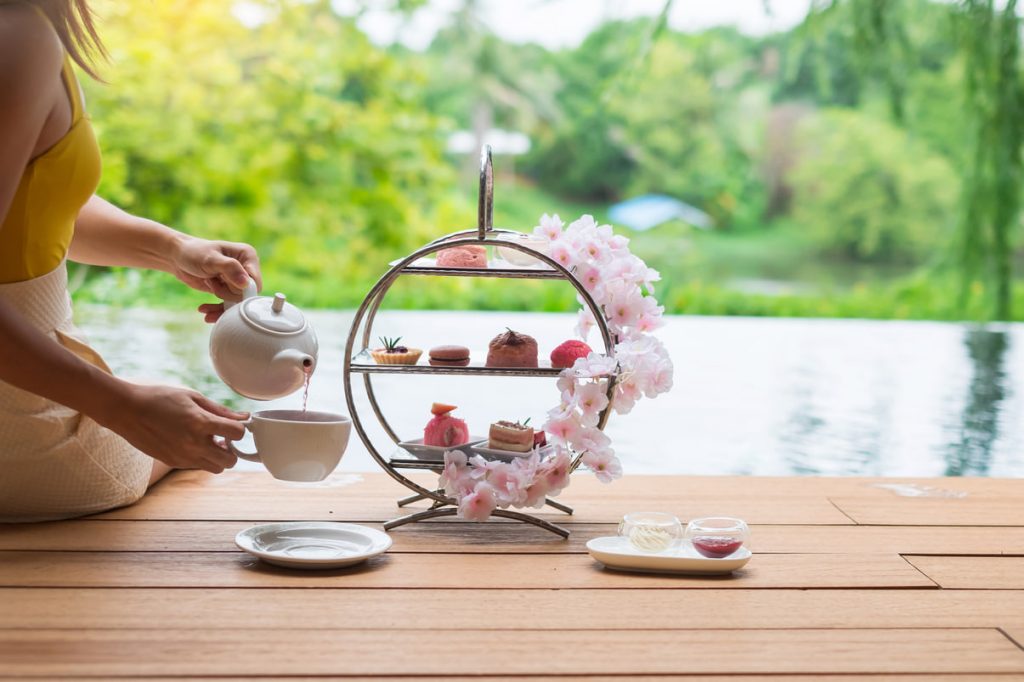The world of tea has been evolving for centuries, but the teahouse industry, like many other sectors, is now at a crossroads. As the global tea culture continues to grow and change, teahouses must adapt to new consumer behaviors, preferences, and technological innovations. Whether you’re an entrepreneur looking to open a new teahouse or an established owner aiming to stay ahead of the curve, it’s essential to stay informed about emerging trends in the industry. In this blog, we’ll explore the key trends shaping the future of teahouses and how they could impact your business.
1. The Rise of Health-Conscious Tea Choices
As consumers become increasingly aware of their health and wellness, many are seeking out food and beverage options that contribute to a balanced lifestyle. Tea, long known for its health benefits, is seeing a surge in popularity among health-conscious customers. This trend is particularly prominent among millennials and Gen Z, who are more likely to value organic, plant-based, and natural ingredients in their diet.
Health-Focused Tea Menus
More teahouses are expanding their menus to include herbal and functional teas, which cater to specific health needs. These might include teas that aid digestion, improve sleep, boost immunity, or reduce stress. Ingredients like turmeric, ginger, chamomile, and lavender are becoming staples in modern tea blends due to their recognized health benefits.
Furthermore, there is a growing interest in teas with adaptogenic properties, such as ashwagandha and reishi mushrooms, which are believed to help the body adapt to stress and promote overall well-being. Teahouses that can curate a menu with these trendy ingredients will appeal to customers seeking both flavor and wellness in every cup.
Customizable Wellness Blends
Another popular trend is the ability for customers to create their own wellness blends. Some teahouses now offer “build-your-own” tea options, allowing guests to combine various herbs, spices, and base teas according to their personal preferences and health goals. This offers a more personalized experience that aligns with the growing demand for customization in food and drink.
2. Sustainability and Eco-Friendly Practices
Sustainability is no longer just a buzzword—it’s a movement that’s reshaping many industries, and the teahouse sector is no exception. Consumers are increasingly concerned about the environmental impact of their purchases, from the sourcing of ingredients to packaging and waste disposal. In fact, a 2022 study found that 66% of global consumers are willing to pay more for sustainable products. As a result, teahouses must find ways to reduce their carbon footprint and embrace eco-friendly practices to attract and retain customers.
Ethical Sourcing
One of the biggest areas where teahouses can make a difference is in the sourcing of their tea leaves. Customers are becoming more conscious of where their products come from, and they want to support businesses that prioritize fair trade, organic farming, and direct relationships with tea farmers. In response, many teahouses are moving toward sourcing high-quality, ethically produced teas that contribute to fair wages and sustainable farming practices.
Eco-Friendly Packaging
Another way teahouses are embracing sustainability is by reducing single-use plastic and adopting compostable or recyclable packaging. Biodegradable tea bags, reusable containers, and plant-based packaging are increasingly common in modern teahouses. Additionally, many tea establishments are encouraging customers to bring their own mugs or reusable cups to reduce waste, while some offer discounts as an incentive for those who do.
Teahouses that make sustainability a key part of their brand identity not only appeal to eco-conscious consumers but also differentiate themselves in a competitive market.
3. The Fusion of Tea with Modern Technology
As technology continues to shape the food and beverage industry, teahouses are finding creative ways to incorporate tech into their operations and customer experiences. From interactive digital menus to smart brewing systems, technology is playing a key role in transforming the traditional teahouse experience.
Smart Brewing Systems
The introduction of smart brewing equipment is one such innovation that is making waves in the teahouse world. With the help of sensors and automation, these devices allow baristas to brew tea at the perfect temperature and steeping time, ensuring a consistently high-quality cup every time. Some even allow customers to customize their brews by adjusting temperature, steeping time, and flavor intensity via a smartphone app.
Interactive Menus and Ordering
Another tech trend gaining popularity is the use of interactive digital menus. These menus can be accessed via QR codes on tables or walls, allowing customers to browse through the offerings and place orders without needing to interact with a staff member. Some teahouses are even using augmented reality (AR) to help customers visualize their tea blends before they order. This level of personalization and convenience enhances the customer experience and reduces wait times.
Online Tea Tastings and Events
As remote experiences become more mainstream, many teahouses are offering virtual tea tastings and events. These can include guided tastings where customers receive a package of teas to brew at home while learning about the origins, flavors, and brewing methods. Virtual tea events, especially those with an educational or mindfulness component, are a great way to engage with a broader audience beyond your physical location.
4. The Return of the Traditional Teahouse with a Modern Twist
While modern teahouses are innovating with technology and health trends, there is also a nostalgic return to the traditional teahouse experience. However, the modern teahouse is reimagining classic rituals with contemporary elements. It’s all about creating a harmonious blend of the old and the new to appeal to a wide range of customers.
Reviving Traditional Ceremonies
The global fascination with Japanese, Chinese, and Moroccan tea ceremonies is inspiring many modern teahouses to revive these rituals, offering customers an immersive cultural experience. These tea ceremonies are not just about drinking tea—they are an opportunity for mindfulness, social connection, and learning about the deep cultural significance behind tea. Many teahouses now offer tea ceremony experiences where customers can participate in the ritual, often paired with food pairings or storytelling.
A Cozy, Social Atmosphere
While modern teahouses incorporate elements like sleek furniture and minimalist design, there’s also a strong emphasis on creating a warm and inviting atmosphere. Many teahouses are focused on making their spaces feel comfortable and community-oriented, offering cozy seating areas for groups or individuals to relax, converse, or work. The “third place” concept, where customers can feel at home outside of their homes or workplaces, is a key aspect of the modern teahouse.
5. Tea Pairings and Culinary Innovation
One of the biggest trends we’re seeing in the teahouse industry is the rise of tea pairings—where tea is not just a beverage, but an integral part of a curated dining experience. Just as wine is paired with food, tea can complement and elevate the flavors of various dishes.
Tea and Food Pairings
Teahouses are experimenting with pairing different teas with specific dishes to enhance the overall flavor experience. For example, a delicate white tea might be paired with light seafood, while a bold, earthy pu-erh could go wonderfully with a hearty stew. Some teahouses even have a full menu where each course is served with a carefully selected tea to complement the flavors.
Tea Infused with Culinary Techniques
Teahouses are also getting creative with using tea as an ingredient in cooking and baking. From tea-infused pastries to matcha lattes and tea-flavored ice cream, tea is becoming a versatile ingredient in the kitchen. This trend not only enhances the customer experience but also sets teahouses apart as culinary innovators in the world of tea.
6. A Focus on Tea Education
As more people become interested in tea, there is a growing demand for tea education. Customers want to understand the complexities of different teas, how they are grown, how to brew them, and the health benefits associated with each variety.
Tea Workshops and Tastings
Teahouses are responding by offering workshops and tasting sessions that allow customers to dive deeper into the world of tea. These sessions may include guided tastings, where customers learn to distinguish between the different types of tea leaves, understand the art of brewing, and discover the cultural heritage of tea-producing regions.
Interactive Learning Opportunities
Some teahouses are also offering interactive educational experiences, like tea blending classes, where customers can create their own custom tea blends. This gives people a hands-on approach to learning about tea and adds a fun and personal touch to the experience.

